I sure hope everyone is staying healthy & sane. We are still hunkering down here in Alaska, indefinitely. I’ll update more details about us in our March Currently post next week. I know everyone is adjusting to new routines and realities, but I figured I should continue my Alaska series as planned! So here goes …
In exchange for living without sunlight for half the year, Alaska compensates with the aurora borealis, better known as “the northern lights.” Scientifically, auroras occur when electrically charged particles from the sun collide with the Earth’s atmosphere gases. This happens in the magnetic poles of the Southern and Northern Hemispheres, which is why Alaska has a front row seat for viewing, not to mention the lack of artificial light pollution and long periods of darkness.
To the viewers, auroras appear as optical illusions. Colorful bands/arcs/rays/smudges/clouds/etc of light dance in the sky, giving the sky an overall eerie glow. The most common colors are yellow-green thanks to the oxygen molecules in the atmosphere, although nitrogen-based reds and blues have certainly been seen.
I have been seeing pictures of the aurora borealis my entire life, as my uncle in Alaska sent my family a calendar every year without fail. So it was always on my “bucket list” to see them in person for as long as I remember and it was certainly one of the draws of experiencing a winter in Alaska.
But now the truth. A quest to see auroras isn’t easy. And while we’ve seen auroras, I can’t say we’ve seen any spectacular shows (at least yet).
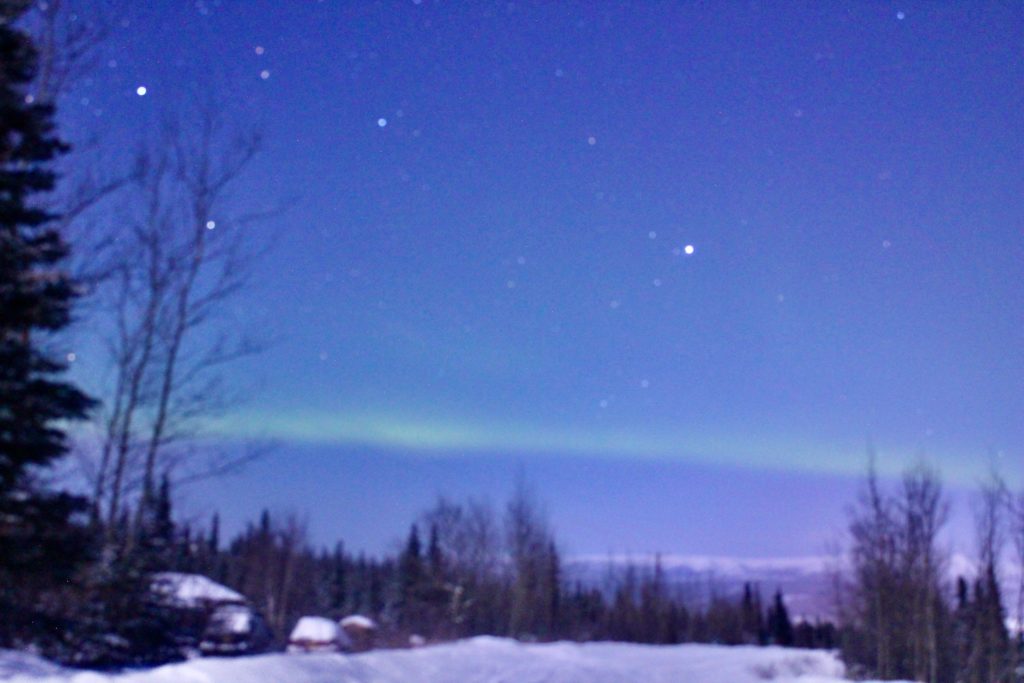
Here are 4 things I learned about aurora viewing, based on our one-winter experience.
#1 – Predictions are kind of hogwash. I mean, not really, but it’s more about being able to read the scientific data. Instead, I let someone else read the data, which equals unpredictable predictions. I use the recommended University of Alaska Fairbanks Geophysical Institute site and an app (Aurora Forecast & Alerts), which shows me a map of solar activity and the Kp index. The Kp index is a scale of 0-9; I’ve never seen more than a 4 predicted, but a 5 is classified as a geomagnetic storm. We have tried to be more diligent on the nights with a Kp 3+, but I can’t say our timing has produced the amazing displays you see in the pictures.
#2 – Conditions need to factor in many variables. Is there a full moon? Is it cloudy? While they still occur during these types of nights, it certainly stymies their appearance. We live in Interior Alaska, with notoriously volatile weather, so cloudy winter nights are common. In fact, many nights, we see a wispy white-gray color in the sky and are not entirely sure what we’re looking at (we call it the “Healy Glow”).
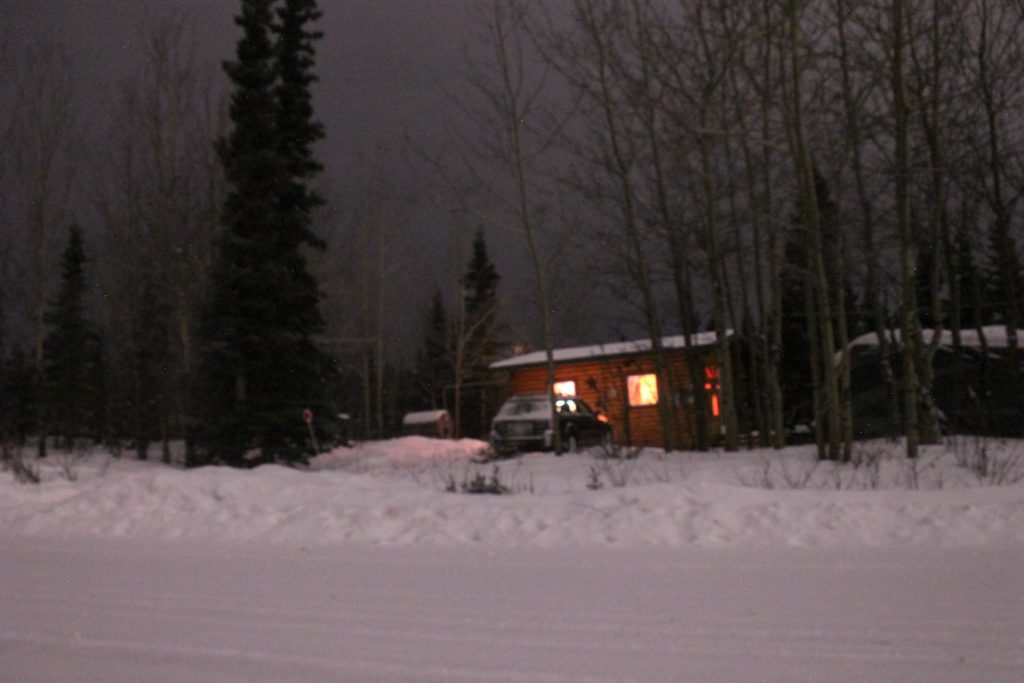
#3 – Much like Denali viewings, if auroras are not out one minute, maybe they’ll be out the next. Auroras could put on a show for hours, but often, it’s just a few minutes. And even though we are more prone to leaving the house in the middle of the night than indoor-dwelling house folks (since our bathroom is outside), the truth is you need to be dedicated aurora watchers to catch them. There are tons of guided aurora tours, and typically it means you are pulling an all-nighter, even when it’s -30. It’s obviously personal preference what sacrifices you want to make. For us, sleep is precious. We’re not always willing to drag ourselves out of our toasty warm bed and shock our systems awake with blasts of Arctic air. Kind of the same reason we choose sunsets over sunrises?
#4 – Sometimes the camera captures more of the color than we can see with the naked eye. The show becomes more pronounced though a camera lens.
January 4 was my best viewing. There was not only a quadrantid meteor shower, but aurora predictions were high. The meteor shower peaked between 2am-6am, perfectly lined with my pesky bladder. Given the fact it was 25 below, I really only stayed outside for 15 min or so. But it was pretty magical.
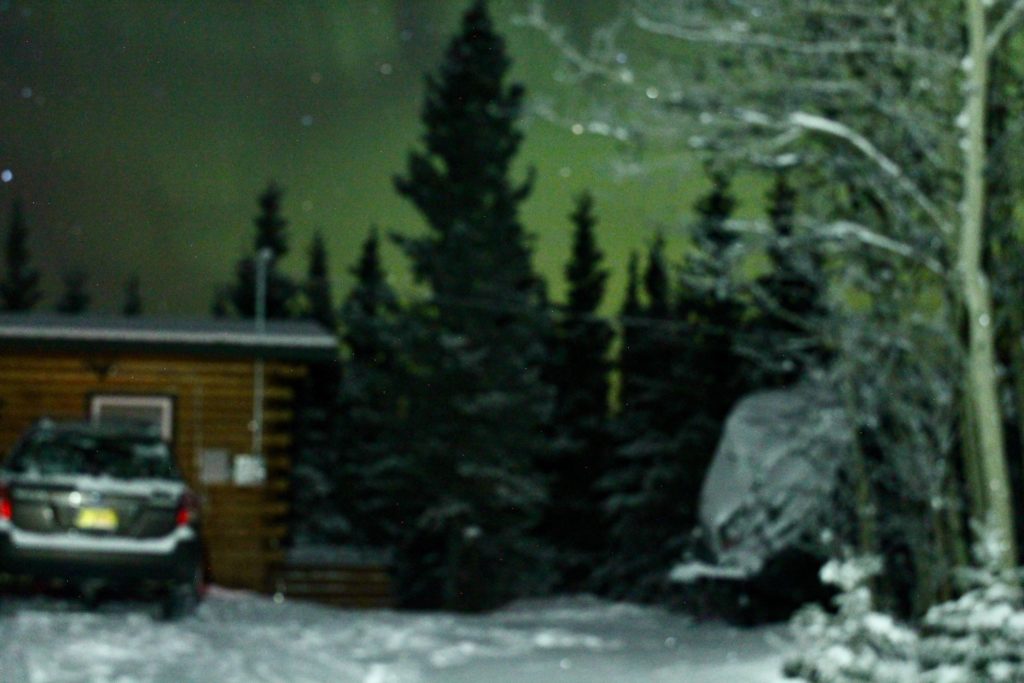
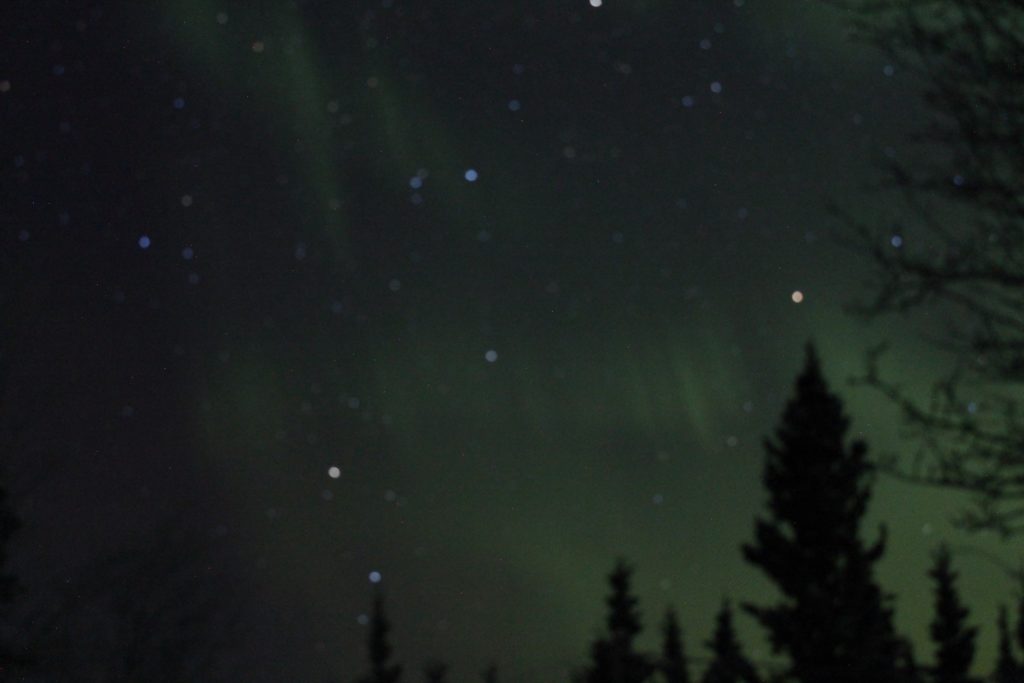
Unrelated to the Northern Lights, we also serendipitously caught “light pillars.” This phenomenon happens when ice crystals in the cold air close to the Earth’s surface reflects off “city lights.” A few of them happened when our temps were dipping back below zero and we noticed them around 10pm, but they were gone almost as soon as they appeared. They seriously looked like beams of light from an alien spaceship!
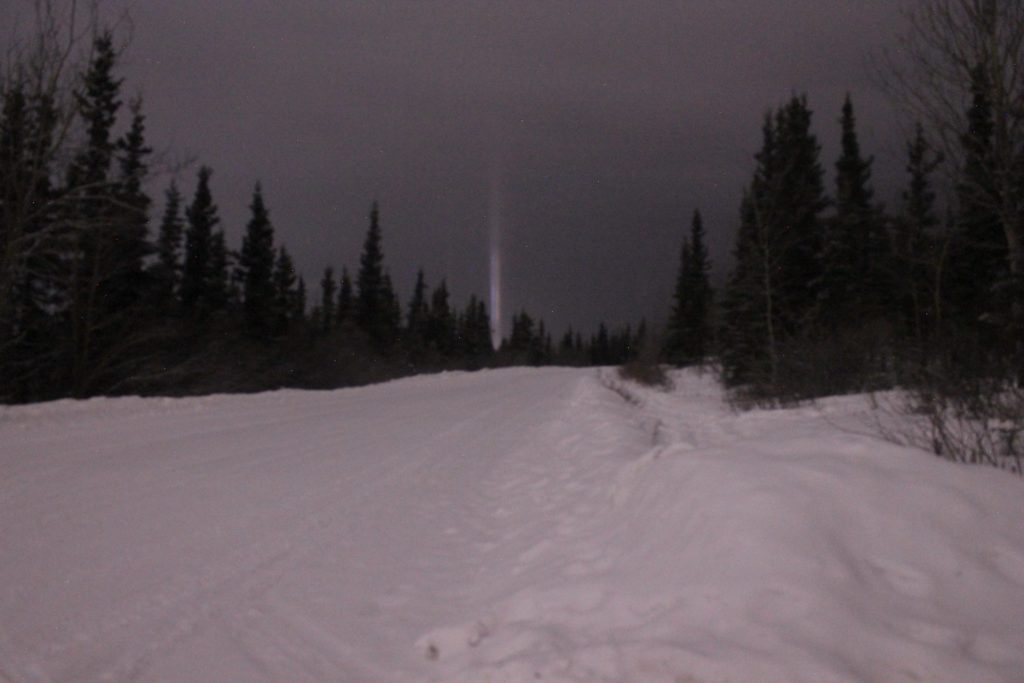
Basically, experiencing the aurora takes effort, patience, persistence and a whole lot of luck! Maybe we’ll see more during the next month, although we’re actually up to 12+ hours of daylight nowadays!
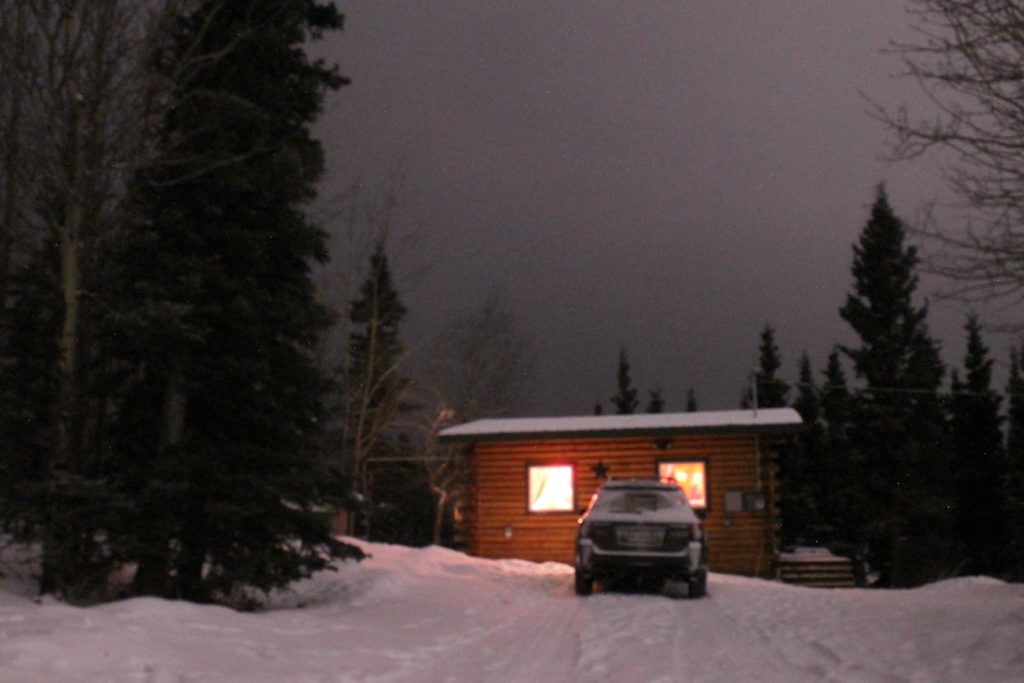







I think I saw a light pillar in nh on my walk to work a couple winters ago. Sorta freaked me out at first. Now I know what it was! Thanks. And who knew you could see more AB light through a camera. I hope that’s a trivia question sometime